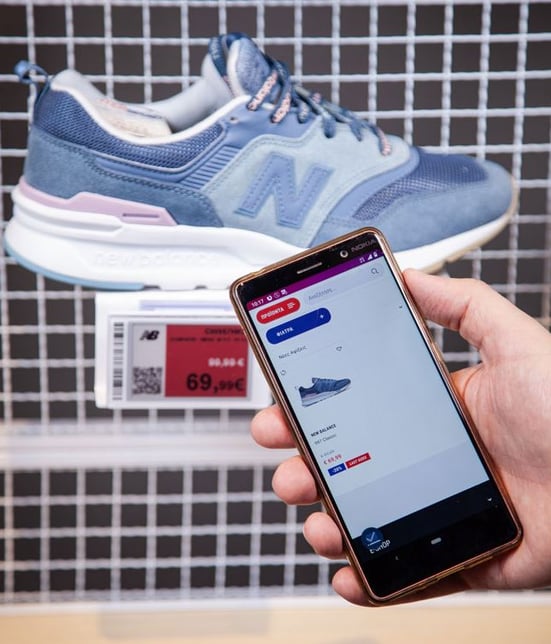The sensitive shelf

Sensitivity to price and promotions among consumers is at an all-time high post pandemic, according to new research. So how can retailers react quickly to give their customers the information and reassurance they are seeking, as well as boost margin, asks Duncan Potter, CMO, Pricer.
History is no longer a reliable indicator of how consumers behave in store because the last 16 months have overwritten the file, to reveal new behaviours that will need new responses by retailers, store managers and consumer goods companies.

Original research of over 2,000 UK shoppers in the latest ‘Pricer Consumer Insight Report 2021’ shows that when it comes to grocery spend, nearly 60% of consumers are more price sensitive now compared to before the start of the pandemic. Only 15% said their price sensitivity hadn’t been impacted.
The causes are various; economic uncertainty, more time during lockdown to focus on home meal preparation, mixed feelings over what may come next, and greater awareness of products and product attributes caused by shopping on line.
As a result, almost two thirds of supermarket shoppers are now more likely to compare prices at the shelf edge in order to keep food bills down, with female shoppers 10% more likely to price compare in the aisle than their male counterparts (67% of women vs 57% of men).
This increased sensitivity to prices has also impacted shopper loyalty, with almost half (49%) saying they have swapped from branded goods to own label in a bid to save cash.
22% however remained loyal to the branded goods they buy and opted not to switch, and it was younger demographics who proved the most loyal; 25 – 34-year olds were the least likely to switch, with just 15% prepared to trade in branded goods to keep the cost of their supermarket shopping down.
Price, value perception and promotional availability were the top motivators when it came to consumers switching loyalty at the shelf-edge. Nearly 80% opted to switch for a better value for money or cheaper option in the aisle, while 37% said they would switch if a better quality item was available on discount, and 29% changed their product choice to make the most of multi-buy deals, such as a BOGOF promotion.
However, while pricing and promotions sensitivity had increased, cost was not the only factor impacting consumers buying decisions in-store; access to information to help consumers validate their buying decisions was a key consideration. Over half (57%) wanted more access to product information in addition to pricing at the shelf edge, and a further 57% also said they would like to see sourcing and ingredients information at the shelf edge to help inform their buying decisions.
Attitudes to promotions were also impacted with 60% of shoppers now more conscious of deals, and more likely to actively seek out promotional offers on products to make their money go further.
40% admitted being so committed to seeking out discounts they changed the times when they shop, opting for the end of the day when they believe more discounts will be offered on items, such as fresh and ambient.
What this all means is the dynamics of pricing and promotions are becoming a lot more fluid in the shopper’s psyche, which means retailers need to be able to better react to these changes in an equally flexible manner. This involves greater consistency of pricing and promotions across sales channels, as well as the ability to react more nimbly to opportunities within the market.
Achieving this demands greater digitalisation at the point of contact with the shopper in store, at the shelf-edge. But this demands technology that is able to convey the breadth and depth of content in ways that combine to meet the needs of a sophisticated consumer that is well able to process it.
Prices, promotions and product information can all be displayed through a single electronic label and changed en masse instantly, the point being that these information no longer need to work independently but combine to make a compelling offer to increase conversions and improve in-aisle experiences.
Further benefits can be derived by optimising the data inputs to labels using specialist software backed by artificial intelligence to enable dynamic pricing that uses business rules to systematically make faster, smarter and more informed price changes based on their elasticity. In short, this is about making the most profitable price decisions which may be as much about raising as lowering prices to boost margins or volumes.
The software also uses data from demand signals to drive price changes at the right time, be it daily, weekly or in real or near-real time.
The triggers to make changes are any external signal such as a change in consumer demand or price sensitivity, a competitor’s price changes or another more personal factor that the retailer is tracking based on their particular position in their market.
For further information on how retailers can unlock new pricing and promotions capabilities to drive in-store conversions and enhanced in-aisle experiences, download the Pricer Consumer Insight Report 2021 Report: Extra Sensory Perception – How The Digital Store Sees And Acts On Demand.
This article was originally published in Retail Technology Review on August 10, 2021